¿Cómo conectar un generador a la casa?
En nuestro mundo moderno, donde la electricidad es vital, los cortes de energía son una realidad frecuente. Conocer cómo conectar un generador a la casa se ha vuelto esencial. Esta guía te mostrará los pasos críticos para hacerlo de manera segura y efectiva, permitiéndote mantener tu hogar en funcionamiento durante interrupciones del suministro eléctrico y preparándote para cualquier emergencia.
Tabla de contenidos
Selección del Generador y componentes necesarios
La elección del generador adecuado es un paso crucial al aprender cómo conectar un generador a la casa. Debes considerar varios factores para garantizar que tu generador satisfaga tus necesidades específicas y te proporcione la energía necesaria durante los cortes de energía.
Potencia Requerida: Determina cuánta potencia necesitas. Haz una lista de los electrodomésticos y dispositivos que deseas alimentar durante un corte de energía. Esto te ayudará a calcular la potencia necesaria del generador.
Tipo de Combustible: Para entender como conectar un generador a la casa es importante tener en cuenta que los generadores pueden funcionar con diferentes tipos de combustible, como gasolina, diésel o gas natural. Elige el tipo de combustible que sea más conveniente y accesible para ti.
Automatización: Piensa en si deseas un generador con conmutación automática. Estos sistemas detectan automáticamente un corte de energía y encienden el generador, garantizando un suministro ininterrumpido de energía sin intervención manual.
Capacidad de Carga: Verifica la capacidad de carga del generador para asegurarte de que pueda manejar la carga total de tu casa. Consulta con un electricista si no estás seguro de cuánta energía necesitas.
Componentes cruciales
El siguiente paso para entender como conectar un generador a la casa requiere centrarse en los componentes clave que asegurarán una conexión segura y eficiente con tu hogar. Aquí detallamos los elementos esenciales:
Panel de Transferencia: Este dispositivo es vital para evitar la peligrosa situación de tener dos fuentes de energía activas simultáneamente. Actúa como un interruptor seguro entre la energía del generador y la red eléctrica, garantizando una transición fluida y sin riesgos.
Cables y Conductos Adecuados: La selección de cables y conductos es crítica. Estos deben ser de la longitud y capacidad necesarias para enlazar el generador con el panel de transferencia y, a su vez, con tu sistema eléctrico doméstico. Utilizar el calibre y tipo correcto de cable es esencial para la seguridad y eficiencia del sistema.
Interruptor de Carga: Este componente te permite seleccionar específicamente qué circuitos o áreas de tu hogar deseas alimentar mediante el generador. Es una herramienta útil para priorizar la energía en áreas críticas como la refrigeración, sistemas de calefacción o iluminación, optimizando el uso del generador durante un corte de energía.
Protecciones Eléctricas Avanzadas: La instalación de protecciones eléctricas, como interruptores automáticos de circuito, es crucial para prevenir sobrecargas. Esto protege tanto a tus aparatos electrónicos como al generador mismo, evitando daños por fluctuaciones de energía o sobrecarga.
Accesorios de Seguridad Esenciales: Además de los componentes eléctricos, la seguridad debe ser una prioridad. Incluye en tu instalación accesorios como extintores de incendios y detectores de monóxido de carbono. Estos dispositivos son indispensables para garantizar una operación segura y prevenir accidentes.
Al considerar estos componentes, te aseguras de que la instalación de tu generador no solo sea eficaz, sino también segura para tu hogar y tu familia.
Descubre la Eficiencia del Diésel en Generadores Eléctricos
¿Estás buscando una solución de energía confiable y potente? Nuestros Generadores Eléctricos Diésel son la elección perfecta para ti. Diseñados para ofrecer rendimiento y durabilidad, estos generadores son ideales para cualquier aplicación, desde uso residencial hasta industrial.
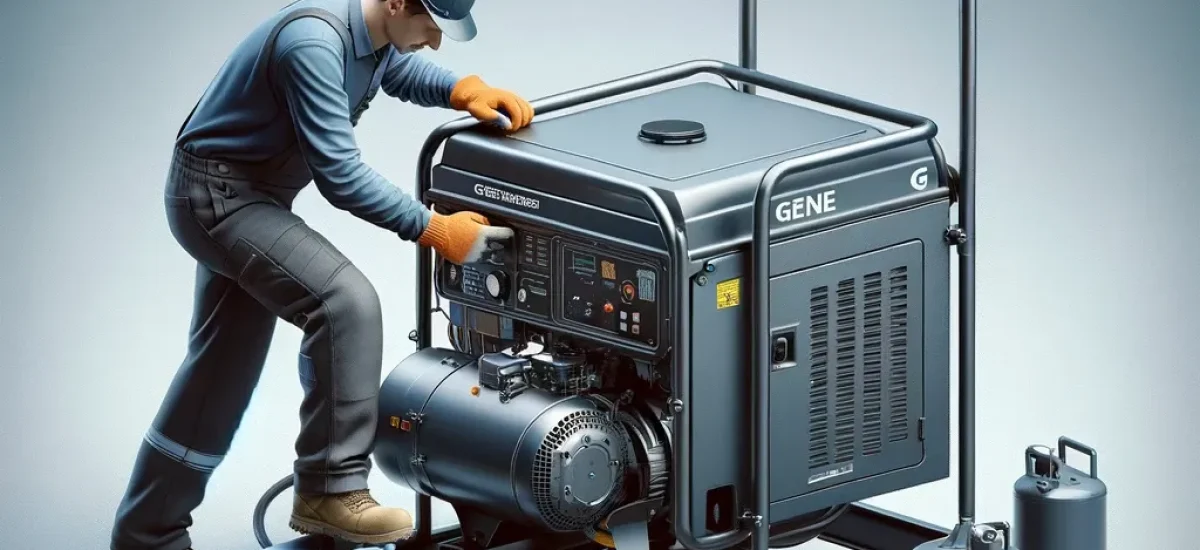
¿Cómo conectar un generador a la casa?
La instalación adecuada del generador es un paso fundamental en la interrogante de “Como conectar un generador a la casa” y garantizar un suministro de energía ininterrumpida durante cortes eléctricos. Sigue estos pasos para llevar a cabo la instalación de manera segura y efectiva:
Ubicación Estratégica: Elige un lugar adecuado para la ubicación del generador. Debe estar al aire libre y lo suficientemente alejado de áreas ocupadas para evitar la acumulación de monóxido de carbono. Asegúrate de que esté en un terreno nivelado y bien ventilado.
Cimentación: Si es necesario, construye una base o cimentación sólida para el generador. Esto ayuda a reducir la vibración y el ruido.
Conexión de Combustible: Conecta el generador al suministro de combustible correspondiente (por ejemplo, el tanque de diésel). Asegúrate de seguir las instrucciones del fabricante y cumplir con las regulaciones de seguridad.
Instalación del Panel de Transferencia: Monta el panel de transferencia automática en un lugar accesible y seguro. Este panel es esencial para coordinar la transición de energía entre la red eléctrica y el generador.
Pruebas Iniciales: Antes de encender el generador, realiza pruebas de encendido y apagado manualmente para asegurarte de que todo funcione correctamente. Asegúrate de que el generador esté en modo de espera.
Configuración del Panel de Transferencia: Programa el panel de transferencia para que pueda detectar automáticamente un corte de energía y activar el generador de manera segura.
Mantenimiento Preventivo: Establece un programa de mantenimiento preventivo regular para el generador, que incluya cambios de aceite, pruebas de batería y limpieza. Esto asegurará su funcionamiento óptimo en situaciones de emergencia.
Pruebas Finales: Lleva a cabo pruebas finales para asegurarte de que el generador funcione como se esperaba. Esto puede incluir simular un corte de energía y verificar que el generador se active automáticamente.
Recuerda: La instalación de un generador debe ser realizada por un profesional con experiencia si no te sientes seguro haciéndolo tú mismo.
Cableado y Conexiones
Saber como conectar un generador a la casa incluye una fase crucial: el correcto cableado y establecimiento de conexiones. Estos pasos son fundamentales para asegurar un suministro eléctrico constante y seguro en momentos de cortes de luz. A continuación, te mostramos cómo efectuar estas conexiones de manera adecuada:
Cableado del Generador al Panel de Transferencia: Conecta los cables de alimentación del generador al panel de transferencia. Asegúrate de que los cables sean de la longitud adecuada y tengan la capacidad necesaria para manejar la carga máxima del generador.
Conexión del Panel de Transferencia al Sistema Eléctrico: Conecta el panel de transferencia al sistema eléctrico de tu casa. Esto generalmente se hace mediante una caja de conexiones en la casa. Es fundamental seguir las normativas eléctricas locales y emplear conductos adecuados para proteger los cables.
Configuración de los interruptores: En el panel de transferencia, configura los interruptores según tus necesidades para determinar qué circuitos o áreas de la casa deseas alimentar con el generador.
Pruebas de Conexión: Antes de poner en funcionamiento el generador, es vital realizar pruebas exhaustivas para garantizar que todas las conexiones estén seguras y funcionen correctamente. Asegúrate de que los interruptores en el panel de transferencia estén configurados de manera adecuada.
Conexión a Tierra: Verifica que el generador esté correctamente conectado a tierra para evitar riesgos eléctricos. Esta conexión suele realizarse mediante una barra de tierra de cobre enterrada.
Revisión por un Profesional: Si no te sientes seguro con respecto al cableado eléctrico, se recomienda encarecidamente que un electricista profesional realice una revisión exhaustiva y certifique la instalación. La seguridad es de suma importancia cuando se trabaja con electricidad.
Recuerda que la instalación eléctrica y el cableado deben cumplir con todas las normativas locales y de seguridad vigentes. Un error en la conexión eléctrica puede tener consecuencias graves, por lo que es esencial realizar este proceso con cuidado y, en caso de duda, buscar la asistencia de un profesional capacitado.
¿Necesita asesoramiento?
Si te sientes abrumado por la instalación y conexión de un generador a tu casa o tienes preguntas específicas sobre como conectar un generador a la casa, no estás solo. Este proceso puede ser complejo y requiere un conocimiento adecuado de electricidad y sistemas de energía. En JRH, estamos aquí para ayudarte y brindarte el asesoramiento necesario.
Contacta ya con uno de nuestros asesores.
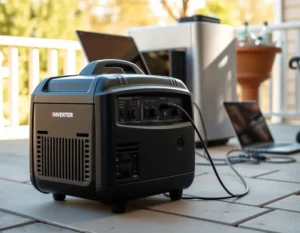
En el mundo moderno, donde la electricidad es fundamental para nuestras actividades diarias, las interrupciones eléctricas son un gran inconveniente, pueden afectar nuestra productividad y
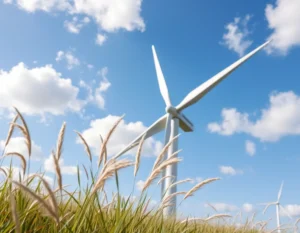
Las turbinas eólicas se han convertido en el emblema de la energía renovable, ofreciendo una solución sostenible y limpia frente a los combustibles fósiles. Sin
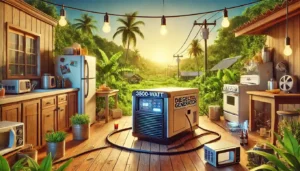
Cuando se trata de mantener la energía en situaciones de emergencia, durante viajes de campamento o en eventos al aire libre, un generador de 3500

En tiempos de cortes de energía o desastres naturales, saber cómo usar un generador para alimentar una casa puede marcar la diferencia entre estar preparado
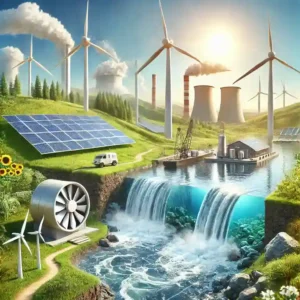
La búsqueda de energías alternativas se ha convertido en un pilar fundamental en la discusión sobre sostenibilidad y el futuro energético del planeta. Pero, ¿cuáles

En un mundo donde la demanda de energía eléctrica sigue en aumento, las interrupciones de servicio y el costo creciente de la electricidad han impulsado

